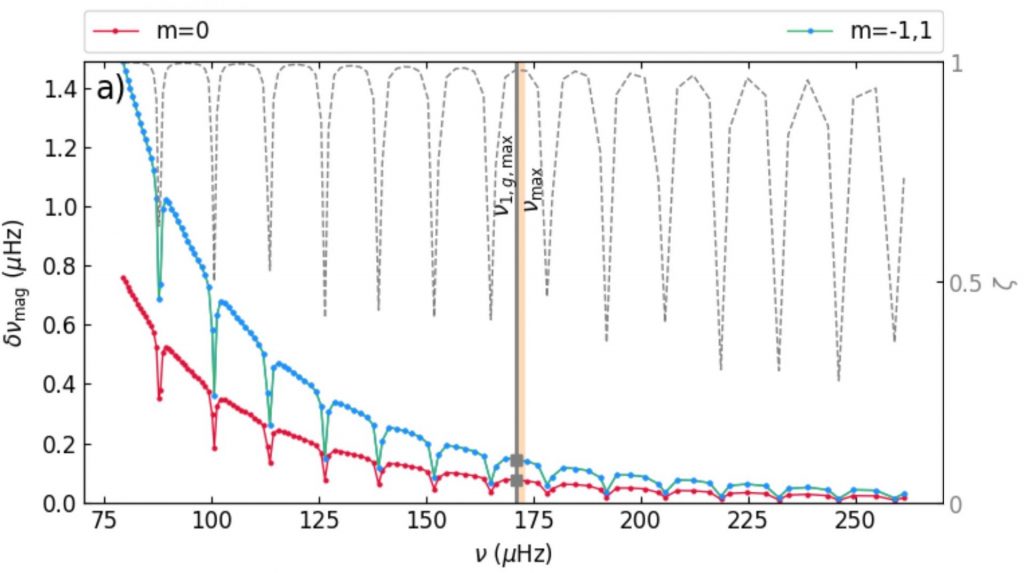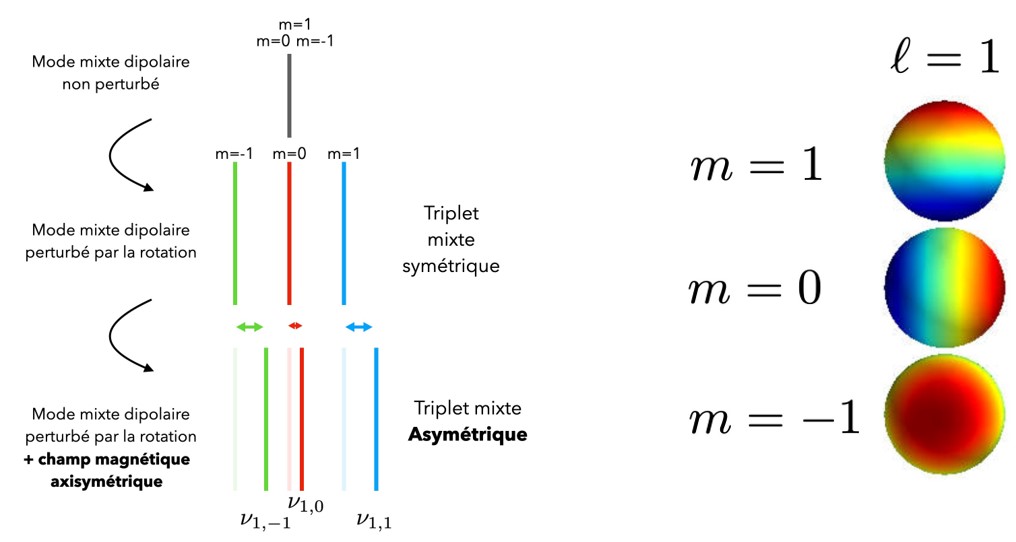An international collaboration led by a team from the Astrophysics Department/AIM Laboratory of IRFU has predicted and characterised the expected signature of internal magnetic fields in stars through their seismology – called asteroseismology. This study demonstrates that thanks to the very precise data from the Kepler (NASA), TESS (NASA) and soon PLATO (ESA) satellites, we are potentially able to detect magnetic fields in the cores of red giant stars (which are the descendants of low-mass stars such as our Sun and intermediate masses below ~8 solar masses). The results are published in two papers in the journal Astronomy & Astrophysics.
Predicting the detectability of 'fossil' magnetic fields along the evolution of stars
The authors study the “fossil field” scenario, according to which magnetic fields generated by the dynamo effect in the convective layers of stars (zones where the thermal stratification of the gas is not stable) are preserved in the stellar interiors when convection stops. These stable magnetic fields thus formed in the radiative regions of stars (areas where the thermal stratification of the gas is stable) remain present at each subsequent stage of their evolution (see Figure 1). This study allows the estimation of the expected amplitude of the internal magnetic fields along the evolution of the star under the fossil field hypothesis. We consider the case where the magnetic field is symmetric about its rotation axis.
The amplitude of such fossil magnetic fields could thus reach values higher than 0.1 Mega Gauss during the advanced evolutionary stage of red giants. In this context, the study of the oscillations of stars of this age (by asteroseismology) makes it possible to identify the processes taking place in their core. Thus, the authors demonstrate that such magnetic fields should impact the oscillation frequencies of red giant stars sufficiently to allow their detection in Kepler data. This study will therefore allow to recognise the presence of an internal magnetic field in the event that its signature is revealed in the data.

Caractériser l'amplitude du champ magnétique interne dans les étoiles
Ces travaux identifient le motif de fréquences que nous devrions observer si de tels champs magnétiques étaient présents dans les intérieurs stellaires. Les auteurs démontrent en effet que les fréquences des oscillations suivant habituellement un motif symétrique du fait de la rotation devraient être décalées de façon asymétrique vers les hautes fréquences en présence de magnétisme interne (voir Figure 2).


Moreover, the detection of such asymmetries would allow us to directly mesure the amplitude of the internal magnetic field thanks to an analytical formulation validated by complete numerical calculations. Such a measurement would be of great importance for our understanding of the internal dynamics of solar-type stars, in particular the moderate internal rotation throughout their evolution, which may be caused by an intense buried magnetic field.
This study combining asteroseismology, theoretical developments and numerical modelling demonstrates the power of asteroseismology applied to the observations of the Kepler, TESS and soon PLATO satellites for the understanding of the evolution and internal dynamics of stars.
Publications:
- “Magnetic signatures on mixed-mode frequencies. I. An axisymmetric fossil field inside the core of red giants” L. Bugnet, V. Prat, S. Mathis, A. Astoul, K. Augustson, R.A. García, S. Mathur, L. Amard, C. Neiner https://www.aanda.org/component/article?access=doi&doi=10.1051/0004-6361/202039159
- “Probing the internal magnetism of stars using asymptotic magneto-asteroseismology” S. Mathis, L. Bugnet, V. Prat, K. Augustson, S. Mathus and R.A. García https://www.aanda.org/articles/aa/full_html/2021/03/aa39180-20/aa39180-20.html


